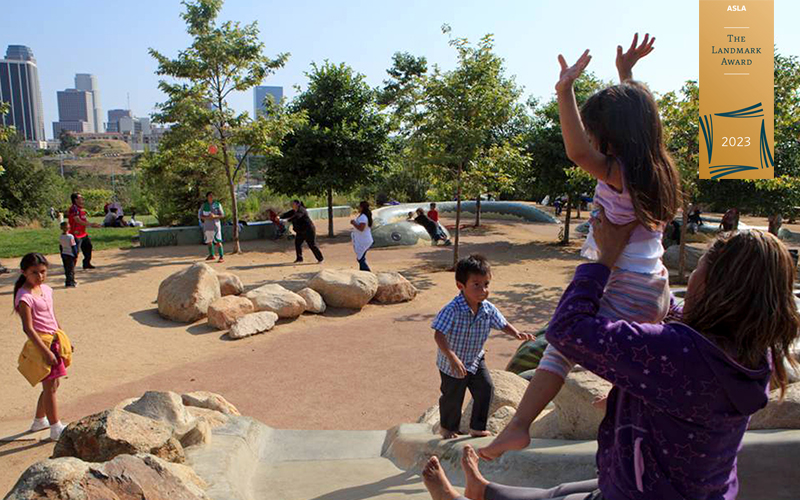 ASLA 2023 Landmark Award. Vista Hermosa Natural Park, Los Angeles, California. Studio-MLA / Tom Lamb
ASLA 2023 Landmark Award. Vista Hermosa Natural Park, Los Angeles, California. Studio-MLA / Tom Lamb
The Outdoors for All Act unanimously passed the U.S. House of Representatives as a part of the EXPLORE Act package. The American Society of Landscape Architects and its members successfully advocated for the measure and now urges the Senate to swiftly pass its version of the bill.
The Outdoors for All Act seeks to address the lack of adequate recreation space in underserved communities. Specifically, the bill will codify and establish a dedicated source of funding for the existing Outdoor Recreation Legacy Partnership Program of the National Park Service.This program will help fund project expenses for new parks, the renovation of existing recreation facilities, and development of infrastructure supporting outdoor education and public land volunteerism. Priority will be given to projects that take place within underserved communities, empower the youth in these communities, and significantly enhance access to parks and recreational opportunities.
“Research confirms what our bodies and nature already understand–more time in outdoor spaces increases well-being,” said Torey Carter-Conneen, CEO, American Society of Landscape Architects. “Communities across the country need investment in welcoming, dynamic, and safe outdoor spaces. Landscape architects have deep experience in bringing people and nature closer together. ASLA urges the Senate to pass this bipartisan bill.”
ASLA Award winning park and recreation examples:
Vista Hermosa Natural Park
was the first public park built in downtown Los Angeles in over 100 years. Previously an oil field located in an urban area without much green space, the park provides residents of a dense, primarily working-class Latine neighborhood with "a window to the Mountains," opportunities for recreation, access to nature, and quiet reprieve.
Barrier Island Resiliency Planning for Galveston Island State Park: Barrier islands are dynamic ecosystems in constant evolution. While wind and tide shape the landscape, tropical storms and sea level rise accelerate inland habitat migration. In 2008, Hurricane Ike completely ravaged Galveston Island State Park. The redevelopment master plan is a new precedent for coastal recreation planning built on a foundation of predictive models. Based on site specific ecologies and elevations, the plan must literally anticipate what of the site will remain in 50 years and what its ecology will be. The restored park opened in 2023.
Set along Jamaica Bay in southern Brooklyn, Shirley Chisholm State Park transforms a pair of closed-and-capped landfills into a vibrant community hub. When the landfills stopped operating in the 1980s, the city, building on research that had been conducted at a larger site on Staten Island, covered them with three feet of soil, making it possible to plant not just grass, which could hardly disguise the origins of the two hills, but thousands of native trees and shrubs. As the meadows began to flourish, community advocates were determined to see the fenced-off wonderland become a badly needed park. But how? On a tight budget and compressed schedule, the landscape architects created new entrances to set a welcoming tone for the entire 407-acre parcel, and then devised nodes both for active recreation and for quiet contemplation. Those cover a small fraction of the park’s land area but draw people onto its 10 miles of trails. The park was immediately embraced by the community, making it a fitting tribute to Brooklyn’s pioneering public servant Shirley Chisholm.